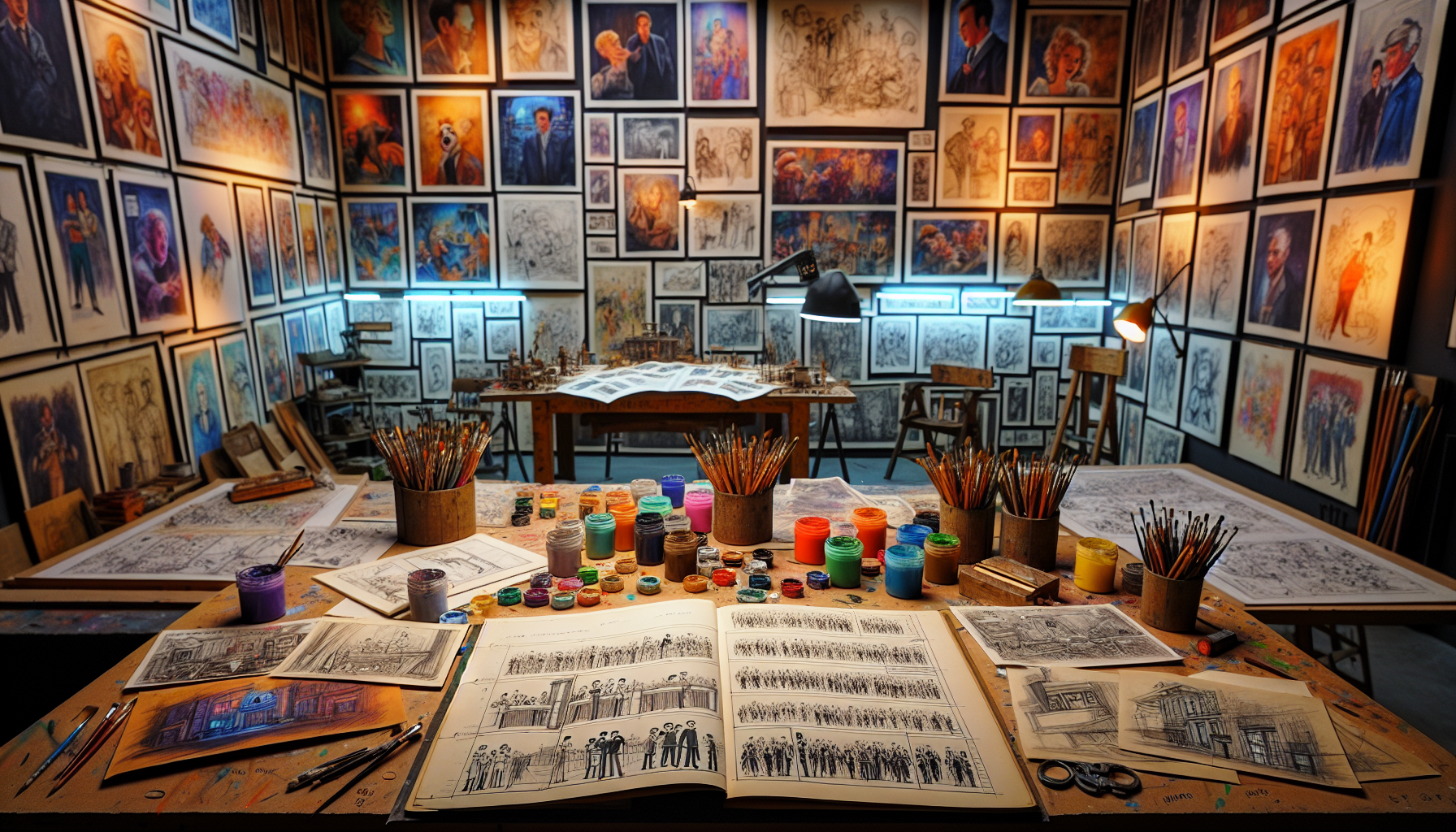
Striking the Perfect Chord: Comedy and Character Arcs in Harmonious Coexistence
Ever watched a movie or binge-watched a show where you caught yourself laughing one minute and discreetly wiping tears the next? Welcome to the masterclass of balancing comedy with character development, a storytelling alchemy that can elevate good content to the realms of greatness. But achieving this isn’t just throwing in a joke here and a sentimental moment there; it’s an art form, a delicate dance between humor and heart.
The Foundation of Funny Meets Profound
First things first, let’s talk about the basis of all epic tales where comedy meets growth: the construction of characters who are as rich in depth as they are quirky. Characters are the vehicle through which our story unfolds, and they need to be relatable, flawed, and yet lovable. Imagine Michael Scott from The Office – a walking disaster in leadership but a character whose personal growth and innate goodness steals the show (and our hearts).
Building Characters: More Layers than a Cake!
Creating characters that linger in the memory goes beyond giving them funny one-liners or dramatic monologues. Each character must have desires, fears, strengths, and weaknesses. This complexity makes them ripe for both humorous and poignant moments. When Leslie Knope gifts Ron Swanson a handmade wooden harp, we laugh at the absurdity of the gift but also deeply understand the friendship and mutual respect that it signifies.
The Role of Conflict: Not Just a Plot Tool
Conflict isn’t merely a vehicle driving the plot; it’s the forge in which character development and comedic situations are delicately crafted. It’s the secret sauce that can simultaneously create tension and tickles. For example, in Brooklyn Nine-Nine, the stoic nature of Captain Holt creates a fertile ground for comedy, yet his interactions and conflict resolutions provide significant insights into his character and relationships.
Types of Conflicts to Serve Comedy and Growth
Different flavors of conflicts work the magic in diverse ways:
- Interpersonal Conflicts: Cue the awkward exchanges, the misunderstandings that lead to comic situations but also expose the underbelly of human relationships, facilitating growth.
- Internal Conflicts: Nothing beats the humor of watching a character argue with themselves. It’s humor directly linked to character insights, giving a peek into their vulnerabilities.
- External Conflicts: Ah, the world versus our hero. Whether it’s battling a bizarre city law or a squirrel, these conflicts can be ludicrously funny while throwing our characters into growth-inducing trials.
Dialogue and Timing: The Comedy-Character Tango
The essence of blending humor with character arc is in the delivery — the dialogue and the timing. A perfectly timed joke in the midst of a crisis can not only provide comic relief but can also shed light on the depth of a character. When Lorelai Gilmore of Gilmore Girls uses humor to mask her vulnerability, we laugh but also realize her complexities and insecurities.
It’s All About the Pacing
Don’t rush the moments. Just like a good joke, the development of the character needs its time to brew. There’s beauty in the build-up, in planting seeds of humor or growth that flourish as the story progresses. Remember, every element does not need to be a gut-buster or tear-jerker; sometimes, it’s the subtle moments that powerfully resonate with the audience.
The Grand Finale: Bringing It All Together
Sure, mixing comedy and character development is about balance, but it’s also about blending. The final act isn’t when you choose between making your audience laugh or cry; it’s about interweaving them so seamlessly that your audience hardly notices they’re sliding from a chuckle into a choke up. It’s about a narrative that doesn’t let go, that’s entertaining yet enlightening, and leaves your audience a little happier, a little wiser.
So, aspiring storytellers, embrace the chaotic yet intricate dance of comedy and character development. Spin that narrative with the elegance of a ballet dancer and the cheekiness of a stand-up comedian. Your audience won’t just thank you; they’ll come back for more, eager for another spin on the emotional rollercoaster you’ve expertly crafted.






